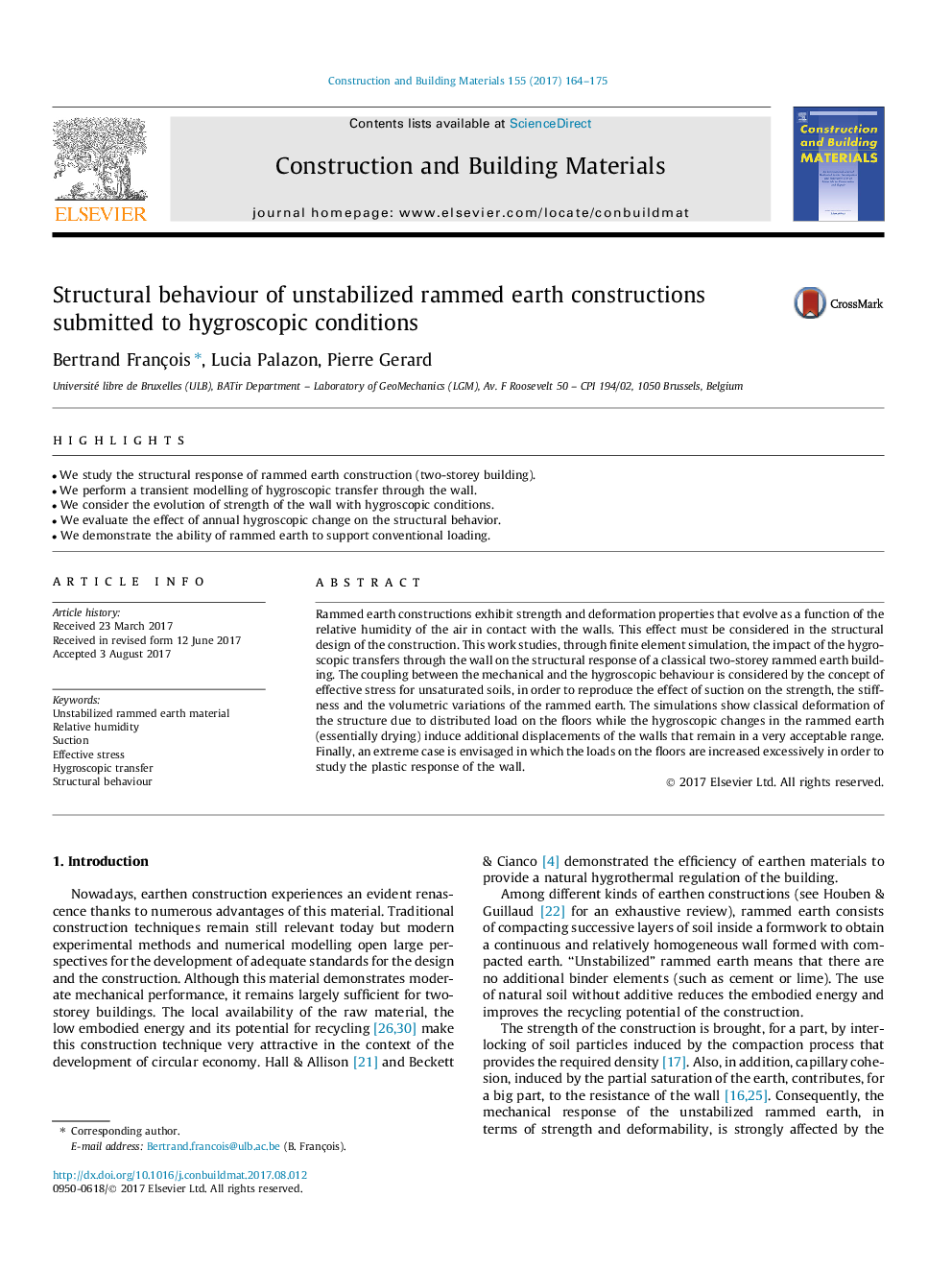| Article ID | Journal | Published Year | Pages | File Type |
|---|---|---|---|---|
| 4918067 | Construction and Building Materials | 2017 | 12 Pages |
Abstract
Rammed earth constructions exhibit strength and deformation properties that evolve as a function of the relative humidity of the air in contact with the walls. This effect must be considered in the structural design of the construction. This work studies, through finite element simulation, the impact of the hygroscopic transfers through the wall on the structural response of a classical two-storey rammed earth building. The coupling between the mechanical and the hygroscopic behaviour is considered by the concept of effective stress for unsaturated soils, in order to reproduce the effect of suction on the strength, the stiffness and the volumetric variations of the rammed earth. The simulations show classical deformation of the structure due to distributed load on the floors while the hygroscopic changes in the rammed earth (essentially drying) induce additional displacements of the walls that remain in a very acceptable range. Finally, an extreme case is envisaged in which the loads on the floors are increased excessively in order to study the plastic response of the wall.
Related Topics
Physical Sciences and Engineering
Engineering
Civil and Structural Engineering
Authors
Bertrand François, Lucia Palazon, Pierre Gerard,
